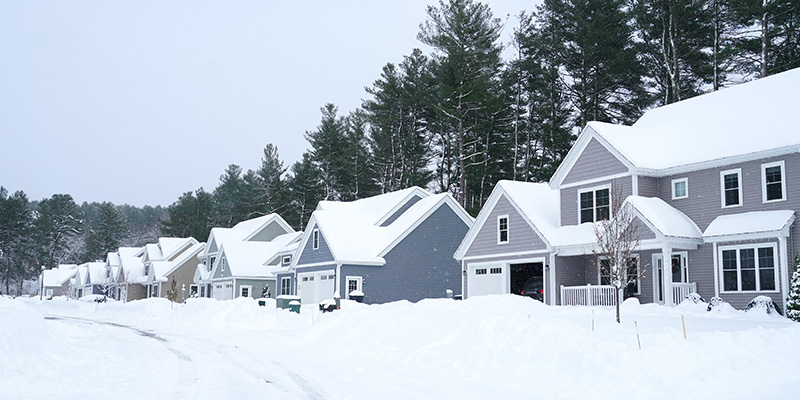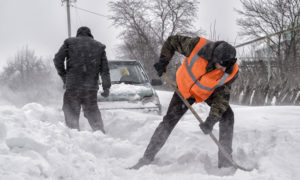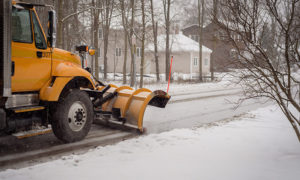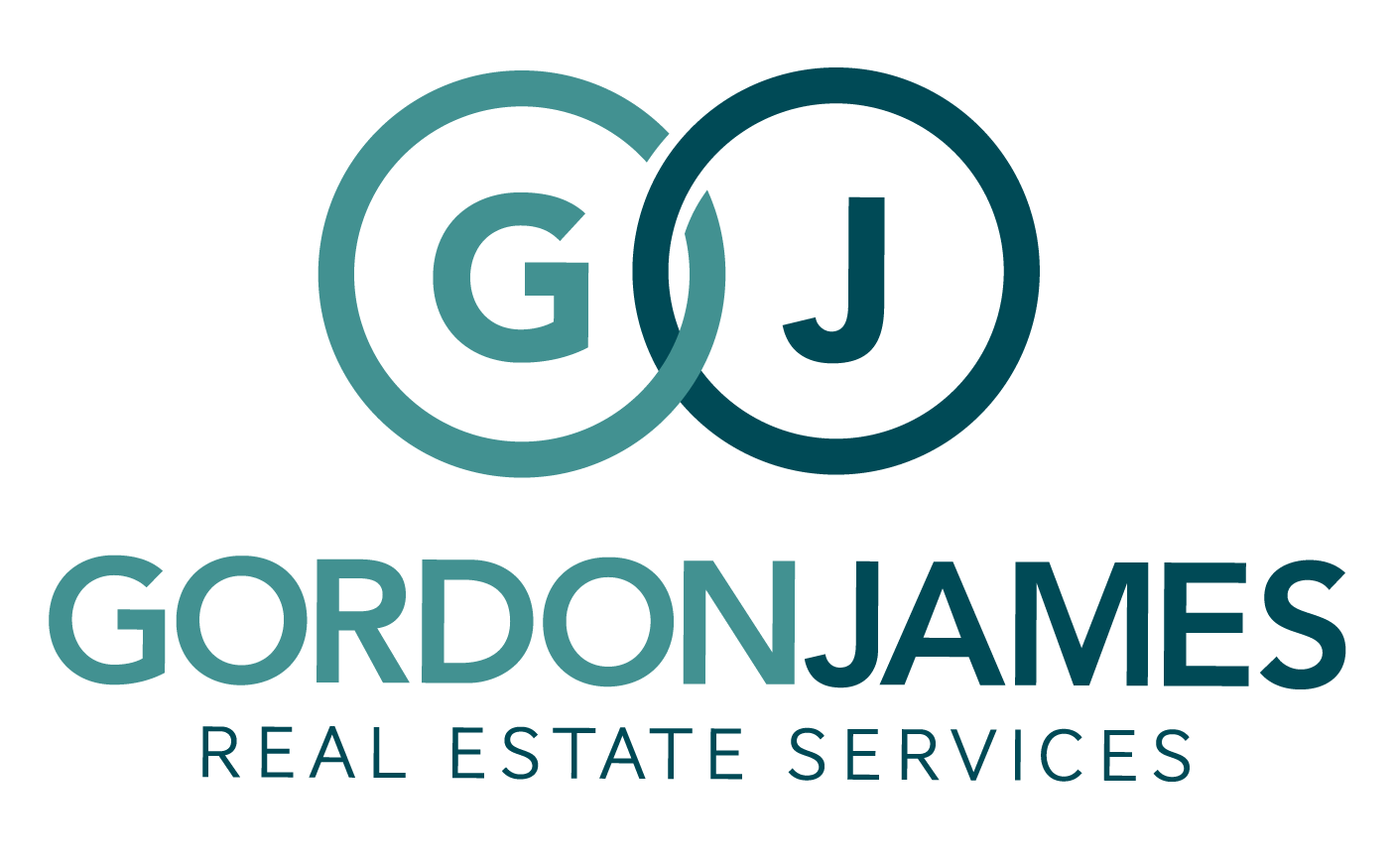HOA Snow Removal: Policies, Contracts, And FAQs

For many homeowners associations, the approach of the winter season means having to prepare for snowfall and its removal. But, crafting your HOA snow removal policy and hiring the best company for it is not always easy.
Browse By Category
Sign up for Our Newsletter
For many homeowners associations, the approach of the winter season means having to prepare for snowfall and its removal. But, crafting your HOA snow removal policy and hiring the best company for it is not always easy.
Defining Your HOA Snow Removal Policy
When it comes to snow removal policies, homeowners associations usually have varying guidelines. Some associations have a clear hand in removing snow from the neighborhood, while others are not as active.
For the most part, public road maintenance falls under the responsibility of the city or county government, with the HOA focusing primarily on the common areas. In this case, homeowners need to shovel snow from their own driveways, walkways, personal parking spaces, and sidewalks. On the other hand, some associations hire a snow removal company to plow the entire area of the community.
Make sure to check your own HOA snow removal policy before the winter season rolls around. This way, you know exactly which areas fall under the association’s responsibility and which areas fall under homeowner responsibility.
If you have yet to define your policies, there is no time like the present. To do so, you must clearly specify the snow removal responsibilities of the HOA and the homeowners. Will the HOA provide a community-wide snow plowing service? Are homeowners responsible for shoveling their own driveways? What about the area around fire hydrants?
Your policies should also state what the association expects from homeowners when it comes to snow removal. For instance, your HOA might require homeowners to clear their sidewalks of snow within a set amount of time following a storm.
It is also imperative to communicate these policies with all homeowners. If your HOA fails to inform members of the policies and their responsibilities, then you can’t expect them to follow them to the letter.
Encourage Homeowner Cooperation
 Your policy should explicitly specify what snow removal responsibilities homeowners should fulfill. Beyond that, though, you should also encourage homeowners to cooperate with the community. Ask them to be conscious of their neighbors and refrain from shoveling snow onto their property. If they spot any potential hazards in the community, they should report them immediately.
Your policy should explicitly specify what snow removal responsibilities homeowners should fulfill. Beyond that, though, you should also encourage homeowners to cooperate with the community. Ask them to be conscious of their neighbors and refrain from shoveling snow onto their property. If they spot any potential hazards in the community, they should report them immediately.
Your community may also have aging residents that require help. As such, encourage homeowners to lend a hand to their elderly neighbors when shoveling snow. You may also want to assemble a group of volunteers to take care of shoveling snow and spreading salt on walkways and sidewalks. This type of collaboration will help you achieve a more harmonious community.
Considerations for Your HOA Snow Removal Contract
Your association can certainly try to remove snow with the help of in-house personnel or community volunteers. But, the best way to ensure excellent results is to turn to a professional company. Whether your HOA hires a snow removal service for common areas or for the entire community, there are some key items that must go into your contract.
1. The Specifics
Your snow removal contract should clearly spell out what services the company will perform for the community. It should also define which areas the company must handle. Are they only responsible for plowing the streets or do their services extend to driveways? What happens if there are hindrances such as broken tree branches or trash?
The contract must also indicate the timing of the services. Will the company pay regular visits or is it more of an on-call service? Some companies may also require snow to be of a certain depth before they can start plowing. Many of them require at least two inches of snow.
Other than that, the snow removal contract should include details on the materials the company will use, where they will put removed snow, where they will store their materials (if applicable), and what preventive measures they will adopt.
Check historical data to gauge what type of snow removal plan you will need. The level of snowfall in your area from past seasons will give you an idea of the amount of snowfall you can expect. If your area does not experience harsh winters or heavy snowfall, then you likely don’t need extensive services.
2. Pre-Treatment Options
Even the slightest bit of snow or ice on the ground can cause accidents in your community. And, because a lot of contracts require at least two inches of snow before plowing can begin, you should make sure your contract covers ice or snow below two inches.
Go with a snow removal service that offers pre-treatment options. Pre-treating your roads and walkways can significantly reduce accidents by preventing ice or snow from piling up. This usually takes place about 48 hours before a storm.
3. Cost Information
Because HOAs are limited to a budget, the cost is an important factor that can influence your decision. During the selection process, ask each company what their fee structure is like. Some companies charge a fixed amount for every visit, while others charge an hourly rate.
Once you have a contract, make sure to review it and look for any hidden charges the company may have. This includes any transportation costs, termination fees, and maintenance costs.
Of course, don’t make your decision based on cost alone. Weigh out the cost with the services each company has to offer. Go with the company that offers the most bang for your buck.
4. Contact Details
Your snow removal contract must also consist of the company’s contact details. This way, you can reach them in case of an emergency. But, it should not just be a regular office number. Ask for a number that is available to you 24/7 — a number you can call even in the middle of the night.
5. Documentation Requirements
It is normal to ask a company to provide proof that they have carried out their services as stipulated. As such, your contract should require the company to document snow removal efforts. In addition to peace of mind, you can use these records in case of a lawsuit.
Of course, don’t just sign anything they present to you after they have performed their services. You can sign documents confirming their presence at a certain time and provided their services. But, don’t sign documents that consist of warranties. Make sure to read through the document before signing.
6. Liability and Insurance
Two of the most important items in an HOA snow removal contract are liability information and insurance coverage. Your contract should state who should legally take responsibility for incidents that take place on the premises.
For instance, if a snow removal employee slips and injures themselves on HOA property, the HOA should not be held legally responsible. The contract should include indemnification of the HOA in case of negligence on the part of the snow removal company.
Furthermore, the company should have the proper insurance policies to protect both itself and the association. This includes liability insurance and worker’s compensation.
HOA and Condo Association Snow Removal FAQs
Is HOA responsible for snow removal?
 Whether or not your association shoulders the burden of snow removal depends on your HOA or condo snow removal policy. Typically, HOAs are only responsible for removing snow in common areas. Individual homeowners are responsible for their own properties.
Whether or not your association shoulders the burden of snow removal depends on your HOA or condo snow removal policy. Typically, HOAs are only responsible for removing snow in common areas. Individual homeowners are responsible for their own properties.
Do HOA fees cover snow removal?
More often than not, your HOA fees do cover the cost of snow removal but usually only for common areas such as parking lots and community amenities. Homeowners normally need to pay for snow removal services for their individual properties. To make sure, you can verify your snow removal policy with your HOA.
How do you calculate snow removal?
The cost of snow removal services can vary depending on your location, needs, and the company you choose. Generally, though, for projects over six inches, you should allocate an additional $30 for every half-foot of snow. You may also need to pay a deposit.
Winterize HOA Community the Right Way
The wintertime is often an unforgiving season that brings harsh weather with it. To prepare your community, make sure to define your HOA snow removal policy and hire the best contractor for the job. In doing so, you can prevent accidents brought on by snow and ice, thereby making your community a safer place to live in.
Are you looking for an HOA management company that suits your budget and needs? Start your search using our helpful online directory.
RELATED ARTICLES:
- Why Is A HOA Management Contract So Important?
- 5 Valuable Tips When Hiring HOA Maintenance Company
- Hiring the Best HOA Landscaping Companies
Trending Now
Related Article
Sign up for Our Monthly Newsletter
Sign up below for monthly updates on all HOA Resource
















